Yucca is a houseplant popular among gardeners. With proper care at home, you can grow a chic bush. It is perfect not only for landscaping a city apartment, but also for designing an office. This evergreen plant is not ashamed to give as well. The adult yucca delights in its appearance. This flower will definitely want to be placed at home.
Content
Types of Yucca
There are more than 30 species of indoor plants. Their difference is mainly in the leaves and dimensions. Some species have lanceolate leaves, while others look like a sword. In addition, in some plants they are covered with rather rigid villi, supplemented with spikes, and the leaf plate is completely smooth.
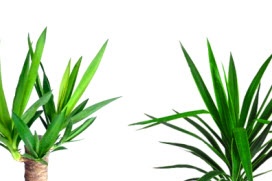
Indoor varieties of yucca with variegated leaves or with distinct strips of white or yellow shade can be found. The most popular types: filamentous, glorious, bluish, elephant, aloe. Most often, florists grow elephant and aloe elite varieties of yucca at home. Less common are plants of the bluish or filamentous species.
Giant or elephant yucca
The elephant yucca is also known as a giant one, and it is popularly called the “false palm”. In its natural habitat, in Central America and eastern Mexico, this species can grow up to 6–9 m. The width of its crown can reach 4–5 m. At home, the maximum height of an elephant yucca does not exceed 3 m.
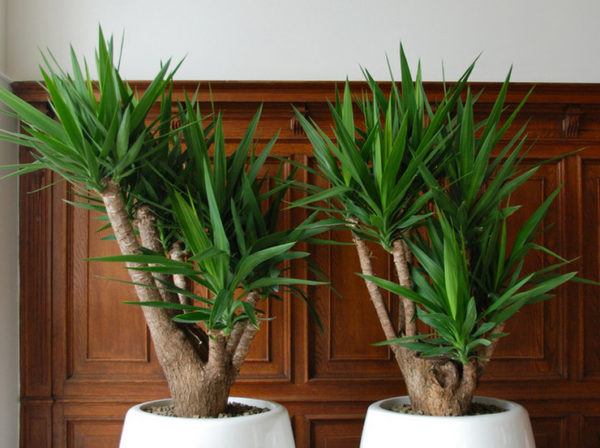
This type of yucca got its name due to the shape of the stem of an adult bush. In mature representatives of this plant, it gradually becomes woody and becomes thick below, and the lower leaves die off. This makes it look similar to an elephant foot. The trunk of the plant may branch. The leaves of the giant yucca are stiff, lanceolate with sharp, slightly jagged edges. In the natural habitat, they can be about 1.2 m long and up to 8 cm wide.
Yucca Aloe
It grows along the Pacific coast, the plant is unpretentious. It is well acclimatized in the southern part of America, which contributes to its cultivation in this area.
The leaves are dense, dark green in color resembling a blade. As they grow, the lower leaves die off, forming a vertical trunk, similar to a palm. Yucca grows up to 6 m, and its trunk can be up to 13 cm in diameter.
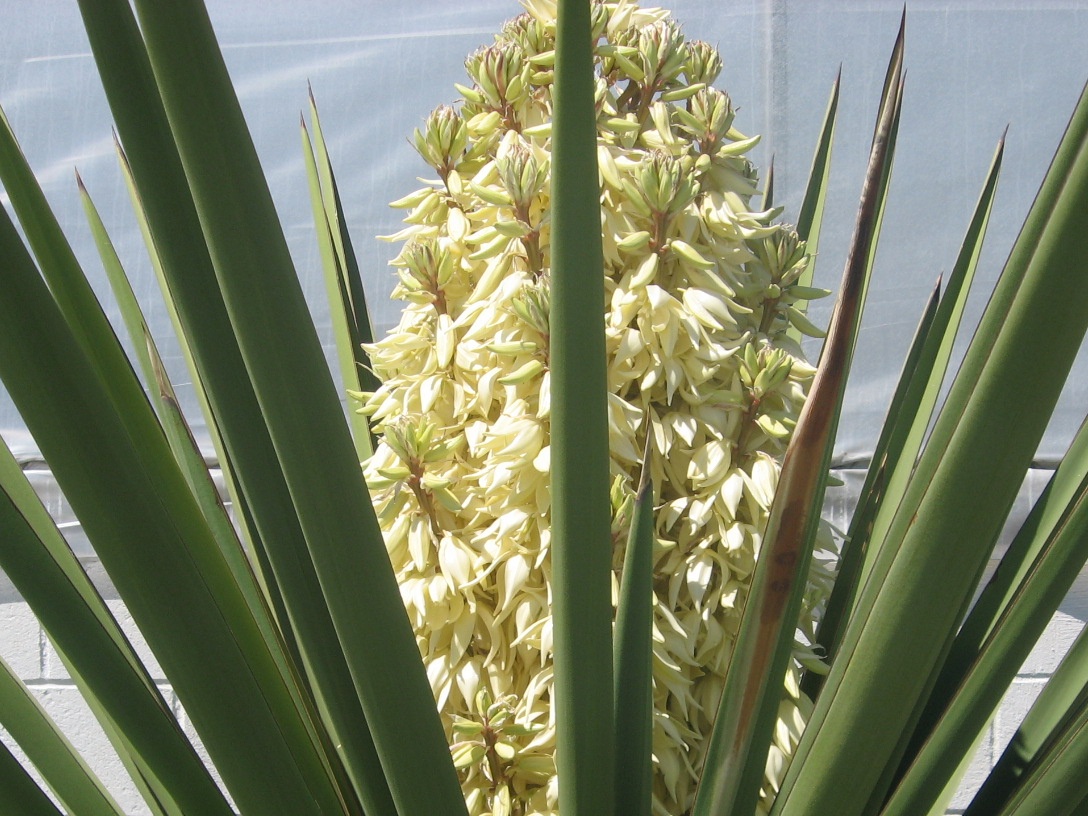
Glorious yucca
It is a tree no more than 5 m tall, but usually does not grow more than 1-2 m. The young plant has no trunk. It resembles a spherical bush due to the fact that its leaves are collected in a basal rosette. The glorious Yucca's leaf plate has a dark green color and is covered with a waxy coating. The lower leaves can be about 1 m long, and the upper ones 50 cm, with an average plate width of 5 cm. The sharp leaves of the dagger-like shape are complemented by a small spike, because the indoor plant has its own minus - the risk of injury.To prevent this, the thorns are trimmed.
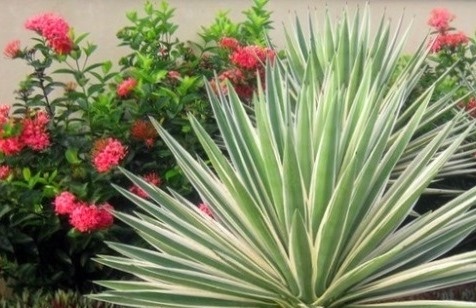
The flowering period begins in June-July, but on the Caucasian coast of the Black Sea it can bloom in November-December. The peduncle is a panicle-shaped, on which there are buds, similar to drooping bells collected in inflorescences, reaches a length of 2 m. They can be white, cream or with burgundy tips.
The flower stalk grows directly from the center of the yucca rosette. Sometimes a single panicle can hold up to 300 flowers. Bisexual buds are quite large, they can reach 5-7 cm.
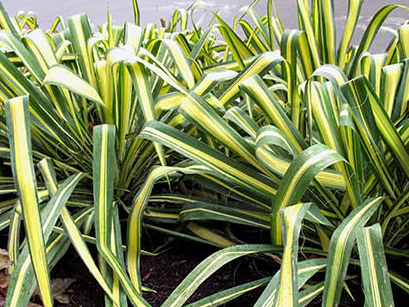
Yucca filament
The thick trunk of this perennial is completely underground. The basal leaves of gray-green color grow directly from the outlet. Their length can be 30-80 cm. They are pointed at the ends, have the shape of a sword and are firm and tough to the touch. In width, they can be 2-4 cm. Fibers similar to threads hang from the edges of the leaves - this representative of false palms owes them their name.

Filamentous yucca blooms in late spring and summer. A single stem grows from the outlet, from which buds hang freely in a bunch. The flower stalk can reach 4 m in length. Yucca filamentosa attracts the eye with its magnificent bell-shaped buds with wide oval petals. Flowers can be a greenish tint or from creamy white to pale yellow.
Yucca Sizaya
The birthplace of this plant is Mexico. It is distinguished by its rather spectacular appearance. The gray yucca has a strong trunk, crowned with a voluminous cap of thin drooping leaves, on which gray hanging threads can be distinguished. In good conditions, this species is able to grow up to 2 meters in height.
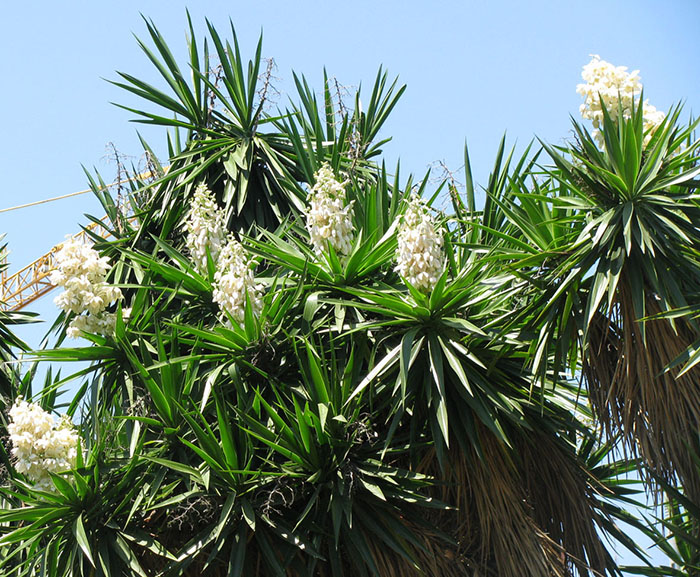
Plant care
Plants constantly need reverent care. Yucca is no exception and requires considerable attention.
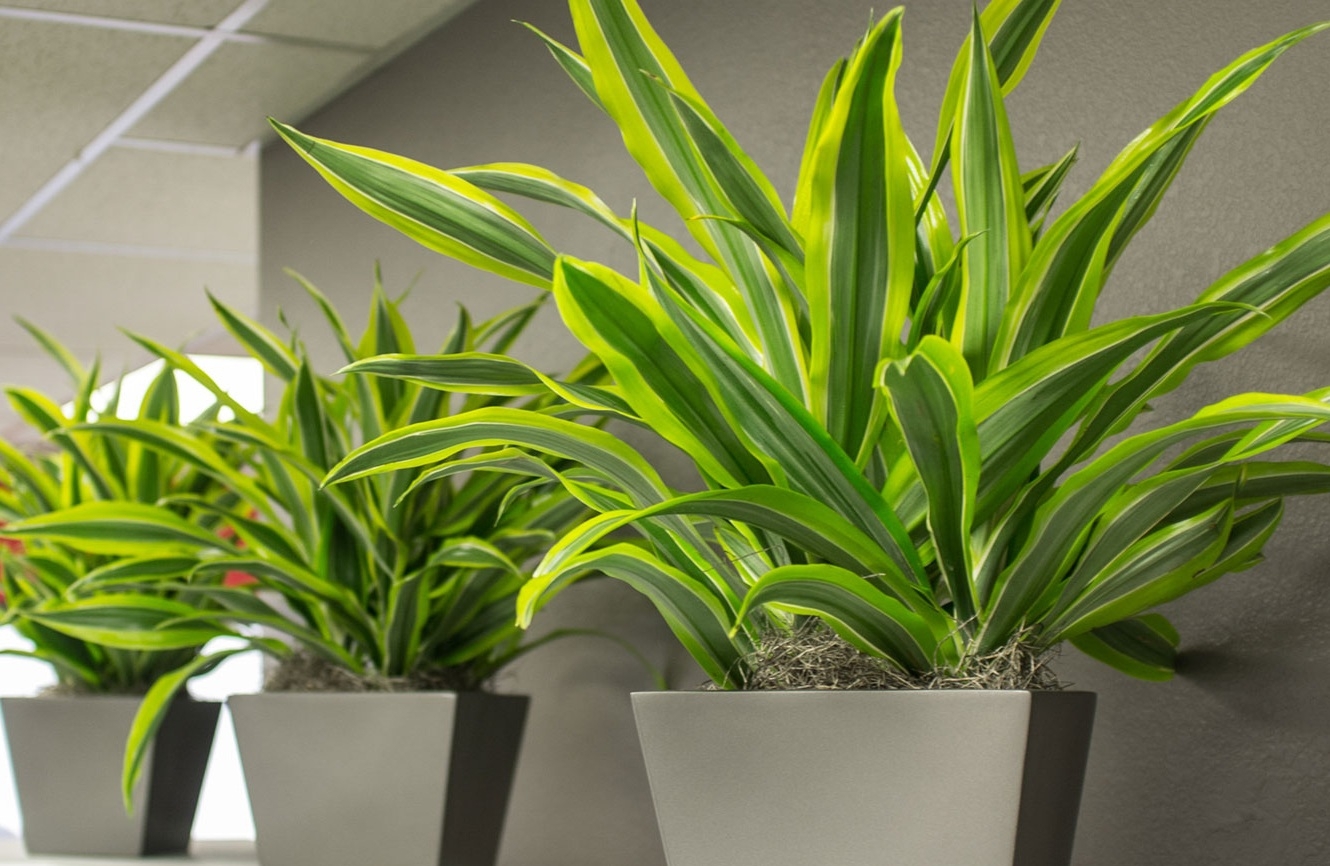
Basic rules for home care:
- temperature conditions acceptable for plants and decent lighting (so that the leaves do not turn yellow);
- humidity control and watering control;
- soil nutrition, drainage;
- fertilizing with minerals;
- plant-friendly transplantation; propagation methods;
- disease prevention and pest control.
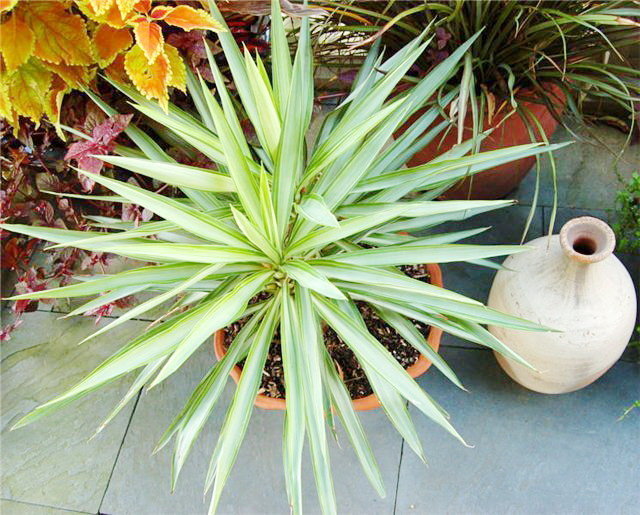
Planting a plant
The fate of the houseplant depends on the choice of substrate. Soil can be purchased at the store. The second option is to cook it yourself. This will require equal parts of such components:
- turf land;
- sheet mix;
- ready humus;
- sand;
- peat.
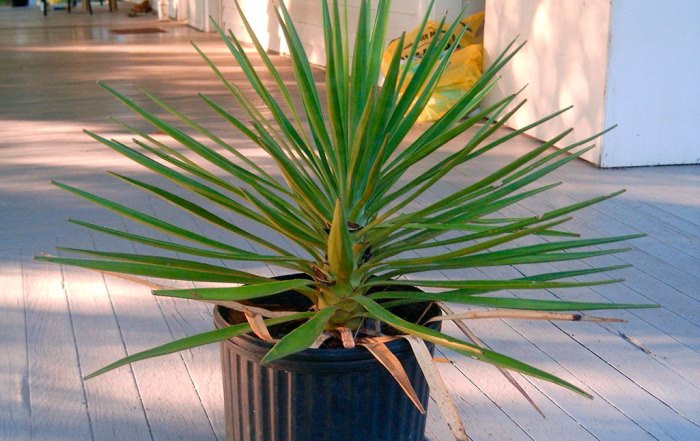
Begin the planting procedure by laying out the drainage on the bottom of the pot. Expanded clay or large gravel is well suited for it. This is the main component for the favorable growth of a houseplant.
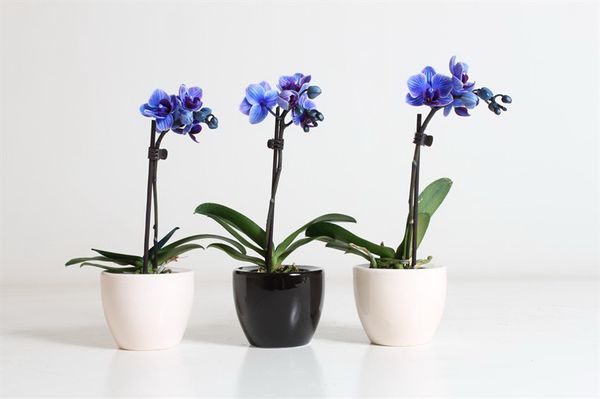 You may be interested in:
You may be interested in:How to water
The irrigation system is completely dependent on the environment. High temperature and low humidity indicate that the plant requires irrigation once every 2-3 days.In this case, do not neglect the spraying, it should be carried out daily, and in the summer in the morning and evening hours. Everything will be visible on the first dry layer of earth. It is recommended to water indoor plants with settled water.
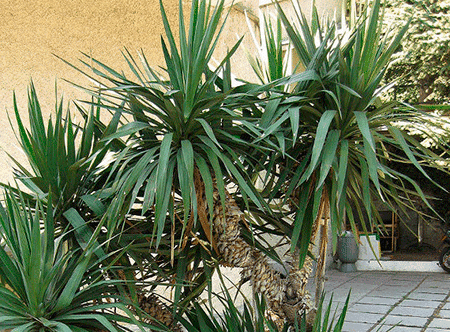
With the onset of cold weather, irrigation regularity is reduced to 1 time per week. Excess moisture significantly worsens the appearance of the tree: leaves curl, painful spots form. And also you need to make sure that the drops do not fall between the outlet of the leaves. Undesirable even slight stagnation of water in the pot so that the roots do not rot.
How to feed and fertilize
The arrival of spring indicates that the plant can not do without feeding. In this case, the main role will be played by mineral fertilizers acquired in specialized stores. They enter the soil with water when watering occurs. This procedure should be performed in the spring and summer months every 10 days. With the onset of the autumn period, the period of feeding is reduced to 1 time in 3 weeks. Indoor yucca does not require deposit fertilizer in winter.
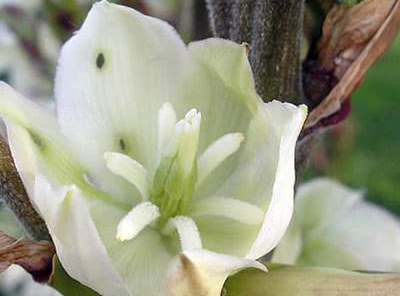
Pruning for stem formation and proper plant growth
Yucca needs circumcision in the last month of winter. From early spring, the active growth of the cultivated plant begins. Do not forget that the circumcision procedure suspends the development of the trunk itself. Given this fact, cutting off excess shoots should be carried out when the thickness of the column in diameter reaches 5 centimeters.
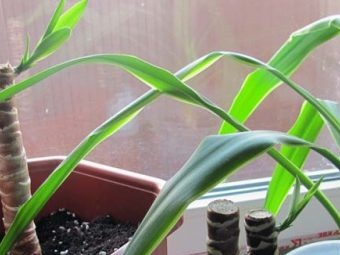
For the procedure, you need a well-sharpened knife, which will be treated with an alcohol solution. The first cut is performed as high as possible from the soil. To avoid damage to the growth points, the crown and upper leaves should be carefully trimmed along the entire diameter of the trunk. The places of cuts must be treated with crushed activated carbon. This home care routine prevents the stem of a healthy yucca plant from decaying.
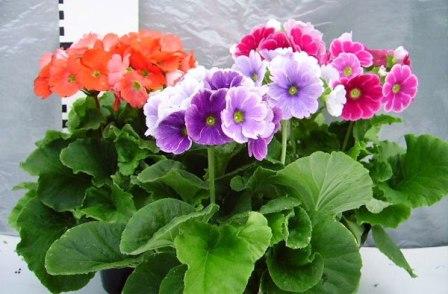 You may be interested in:
You may be interested in:A cropped yucca is placed in a place where there is direct sunlight. During this period of time, systemic watering is required, but no more than 2 times a week.
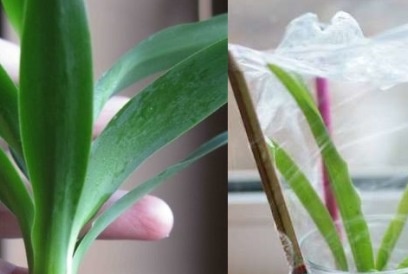
After 3-4 weeks, new buds will erupt at the cut sites. The plant will actively start from 2 to 5 young branches.
When to transplant
Yucca transplantation is performed as the root system grows. The second reason for the procedure is rotting of the roots, improper care at home or damage to the flower by insects.
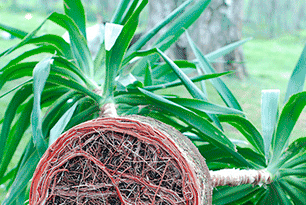
Very young plants require a transplant every spring. There are three main ways to replace the soil in a flower pot: transshipment, transplanting and replacing the top layer.
Flowering features
Yucca blooms for a month. The inflorescence is represented by a long arrow with small buds of a white or cream shade. Flowering is accompanied by a pleasant aroma and is possible only in adult specimens.
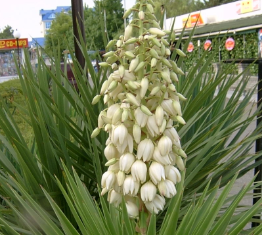
A prolonged lack of flowers in an adult yucca is possible in the case of improper care of the plant at home and neglect of the principles of its maintenance. Below you can see a photo of a flowering healthy shrub.
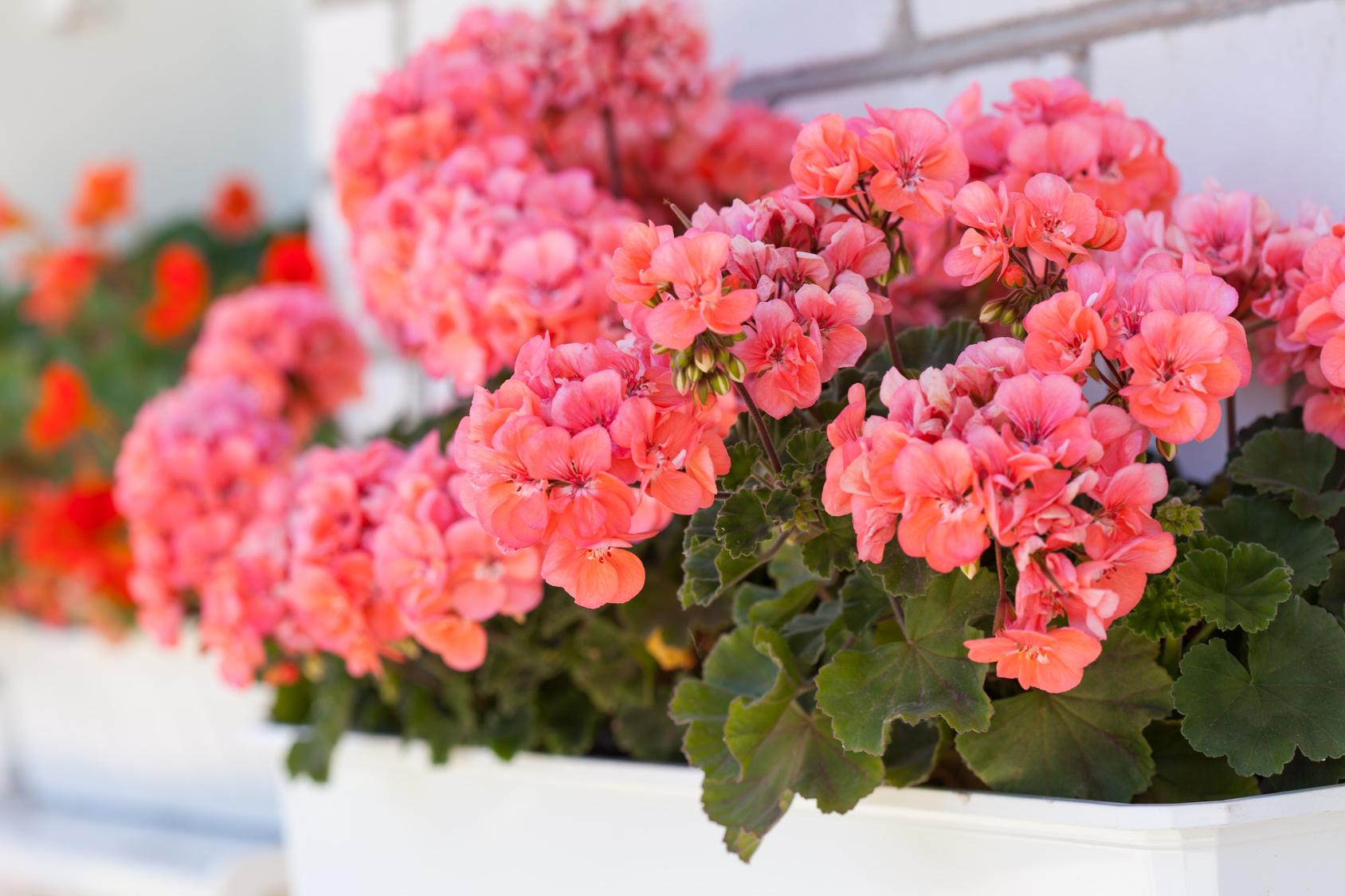 You may be interested in:
You may be interested in:Yucca propagation
You can increase the population of your favorite palm tree with:
- germination of seeds collected after flowering;
- yucca stem cuttings;
- separation of the processes from the mother plant;
- upper stem.
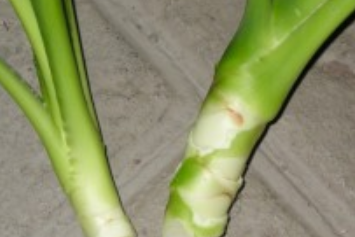
For each method, a favorable period is distinguished. Reproduction by seeds should begin at the end of winter. Seeds must be placed in containers with soil at a distance of 5 mm from the surface. Seedlings should be covered with a dense film and placed in a bright place with a comfortable temperature regime. For successful germination, it is necessary to ventilate the tanks daily and moisten the soil as it dries. The first shoots appear after about 30 days.
Cutting of the trunk is carried out by cutting off its parts and dividing into several parts. Cuttings are planted in a moistened substrate, consisting of a mixture of peat and sand. For successful rooting, greenhouse conditions are created using a film tightly wrapped around a container. Getting the mother plant, therefore, is possible in the summer. This is due to the active growth of the flower.
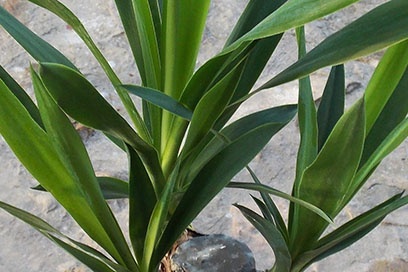
In spring, yucca can be propagated by rooting the upper stem. A stalk remote from the parent plant must be placed in a container with clean water for a two-day period. Then placed in wet sand, creating greenhouse conditions. After successful rooting, the young plant is transplanted into the ground.
After separation from the palm of the top or part of the stem, its growth does not stop, lateral shoots appear that increase the decorativeness of the plant.
Common Diseases and Pests
Indoor plants, like outdoor plants, are prone to various diseases. If you violate the basic rules of care at home for a room palm of a yucca, the risk of spread of fungal infections increases.
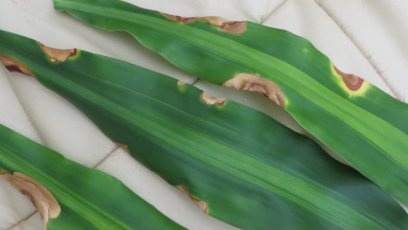
The appearance of brown spots (photo) on the leaves is characteristic of the manifestation of a fungal disease. At its first signs, it is necessary:
- reduce watering;
- eliminate moisture on the leaves;
- reduce humidity in the room.
Affected leaves should be removed.
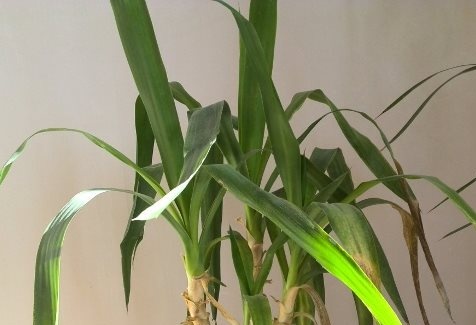
Rotting of the roots or stem can cause the death of yucca. Having revealed the first signs of the disease, you need:
- remove all rotten parts;
- reduce watering;
- take control of air humidity.
In addition to fungal diseases, pests can spoil the appearance of the flower. The most common are spider mites and false shields.
The first pest is located on the underside of the green plate. One of the signs of its occurrence is tarnishing of the leaves and their rapid death. Preventive measures include treatment with a mild soap solution and the use of insecticides for spraying.
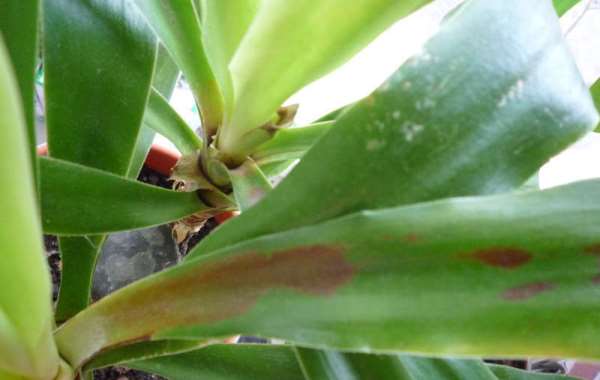
A characteristic sign of the defeat of the plant by a false shield is damage to both the leaves and the stem of the yucca. The lack of appropriate treatment and inaction with the manifestations of diseases and the occurrence of pests leads to rapid death of the plant.
Knowing the basic procedures for caring for a yucca flower, you can grow a chic bush at home that will delight with its appearance not only the owners, but also those around them. After all, you can land him in the yard or in the garden.




 10 beautiful annuals that bloom all summer
10 beautiful annuals that bloom all summer Sow in the ground, without seedlings: 10 beautiful and unpretentious flowers
Sow in the ground, without seedlings: 10 beautiful and unpretentious flowers Platicodon planting and outdoor care
Platicodon planting and outdoor care Hosta - planting and care in the open ground in the Urals
Hosta - planting and care in the open ground in the Urals